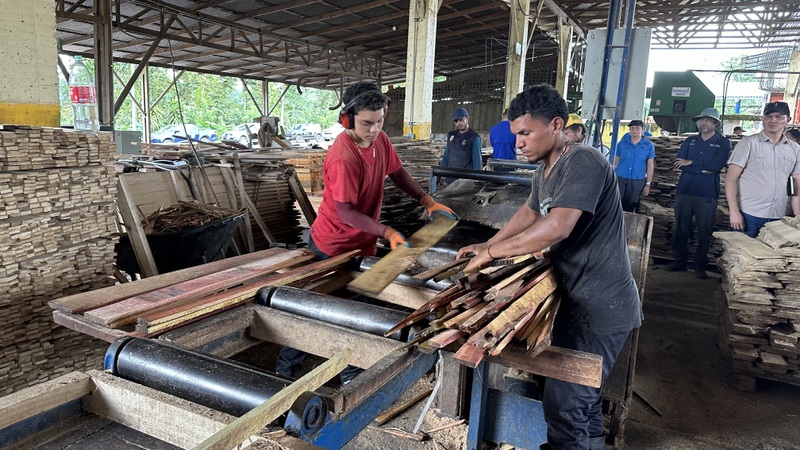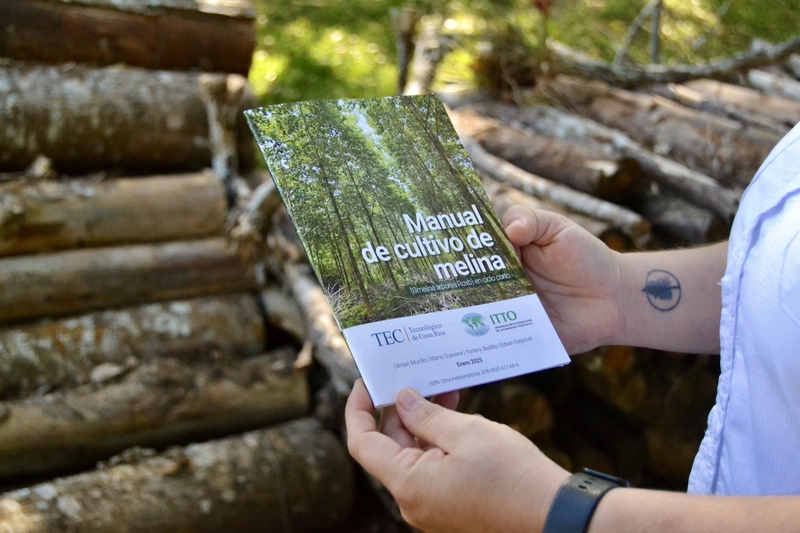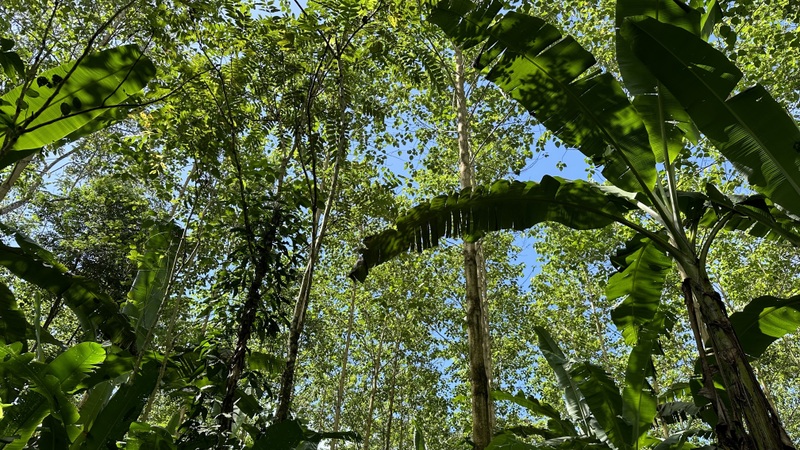International Day of Biodiversity 2025: ITTO shows harmony with nature and sustainable development
22 May 2025, Yokohama
When we think of biodiversity, we often jump to images of wildlife, national parks, and conservation areas. For decades, the dominant approach to conserving biodiversity has been to shield natural ecosystems from human activity—an understandable reaction to the rapid loss of species and habitats. However, a growing body of evidence now shows that conservation and sustainable production can reinforce each other and co-exist.
This shift in perspective is especially urgent in light of alarming global trends. The Intergovernmental Science-Policy Platform on Biodiversity and Ecosystem Services (IPBES) reported that around 1 million species of plants and animals face extinction, many within decades, unless we address the root causes of biodiversity loss. The extinction crisis has far-reaching consequences, most of which are still unknown but are unlikely to bode well for humanity. Tropical forests, which house a vast majority of the world’s terrestrial biodiversity, are at the heart of this crisis, yet it is also the solution.
ITTO and its role in biodiversity conservation
The ITTO has worked for almost four decades to promote SFM, which supports both biodiversity conservation and economic development in tropical countries.
ITTO’s strong partnership with the UN Convention on Biological Diversity (CBD), the global treaty dedicated to conserving and sustainably using biodiversity, has been pivotal. This collaboration culminated in the Joint ITTO–CBD Collaborative Initiative for Tropical Forest Biodiversity, launched in 2010. This initiative has supported numerous projects demonstrating how conservation and production can go hand in hand.
Since the 1990s, ITTO has developed multiple guidelines for forest managers and policymakers, including on the management of natural production forests, planted forests, the restoration of degraded and secondary forests, and fire management. All of these guidelines emphasize biodiversity conservation as a core principle.
Notably, ITTO has worked with the International Union for Conservation of Nature (IUCN) in creating biodiversity-friendly forest management guidelines, which are now being updated to reflect today’s ecological and social challenges. ITTO also supports tropical countries in managing transboundary conservation areas.

An example of harmony between nature and people
Costa Rica has emerged as a global leader in aligning environmental protection with economic growth. The country has reversed one of the world’s most dramatic deforestation trends, increasing its forest cover from a low of 21% in the 1980s to 57% today, while protecting 25% of its land. Remarkably, it has done so while also becoming the top agricultural exporter in Latin America.
This transformation began in the 1990s with progressive environmental reforms, most notably the Payment for Ecosystem Services (PES) scheme. Funded by a tax on fossil fuels, the PES program compensates landowners for conserving forests, and now also includes untitled lands, benefiting indigenous peoples and marginalized communities.
Yet, even as Costa Rica celebrates its conservation successes, it faces new challenges.

The need for sustainable timber production
Despite progress, Costa Rica’s commercial reforestation rates have been declining since the early 2010s. This trend has led to a reduced domestic timber supply, increasing the risk of illegal logging in both protected and private forests. It has also resulted in job losses, encouraged the use of unsustainable timber substitutes, and threatened Costa Rica’s ability to meet its REDD+ targets.
To address these concerns, Costa Rica launched a new initiative to increase the competitiveness of its commercial reforestation. With the support of ITTO, the project will propose innovative financing mechanisms for sustainable forest plantations aimed at increasing plantation productivity, and promoting high-value timber products that raise incomes for small producers.
This initiative focuses on the northern forest region, where most domestic timber is sourced. There, forests are increasingly being converted to agriculture due to low profitability from sustainable forest management (SFM). This trend stems from a combination of factors: limited technical knowledge, inadequate support, weak marketing skills among smallholders, and low demand for local timber.
Through ITTO’s technical expertise, Costa Rica’s forestry institutions engage with local communities, including women and youth, in line with Costa Rica’s national REDD+ gender action plan and ITTO’s guidelines on gender equality, to create decent work opportunities and enhance livelihoods. With strengthened knowledge, better governance, and improved market access, land owners will be more inclined to manage their land sustainably rather than convert it.

Biodiversity and the sustainable development agenda
This year’s International Day for Biodiversity (May 22), with the theme "Harmony with nature and sustainable development", highlights the synergies between the Sustainable Development Goals (SDGs) and the Kunming-Montreal Global Biodiversity Framework (KMGBF). These two global agendas are intertwined, and both must be pursued together to ensure a future of peace, prosperity, human wellbeing and environmental resilience.
There is no inherent contradiction between biodiversity conservation and a vibrant forest economy. SFM, ITTO’s guiding principle since the 1980s, remains the most effective way to ensure that forests continue to provide their myriad services—ecological, social, and economic.
On this International Day for Biodiversity, ITTO Executive Director Sheam Satkuru reminds that SFM “is a concrete and effective way to achieve the Sustainable Development Goals (SDGs).” In particular, Goals related to climate action, life on land, poverty reduction, and sustainable livelihoods. “It is also essential for meeting the targets of the KMGBF, which calls for the conservation and restoration of ecosystems while enhancing the benefits to people and ensuring equitable participation,” she added.
When sustainably managed, tropical forests can support thriving ecosystems and resilient communities alike. “Harmony with nature is not an abstract ideal. It is a critical necessity for a resilient, equitable, and sustainable world, and SFM is one of the tools that contributes to materializing that idea,” Satkuru emphasized.